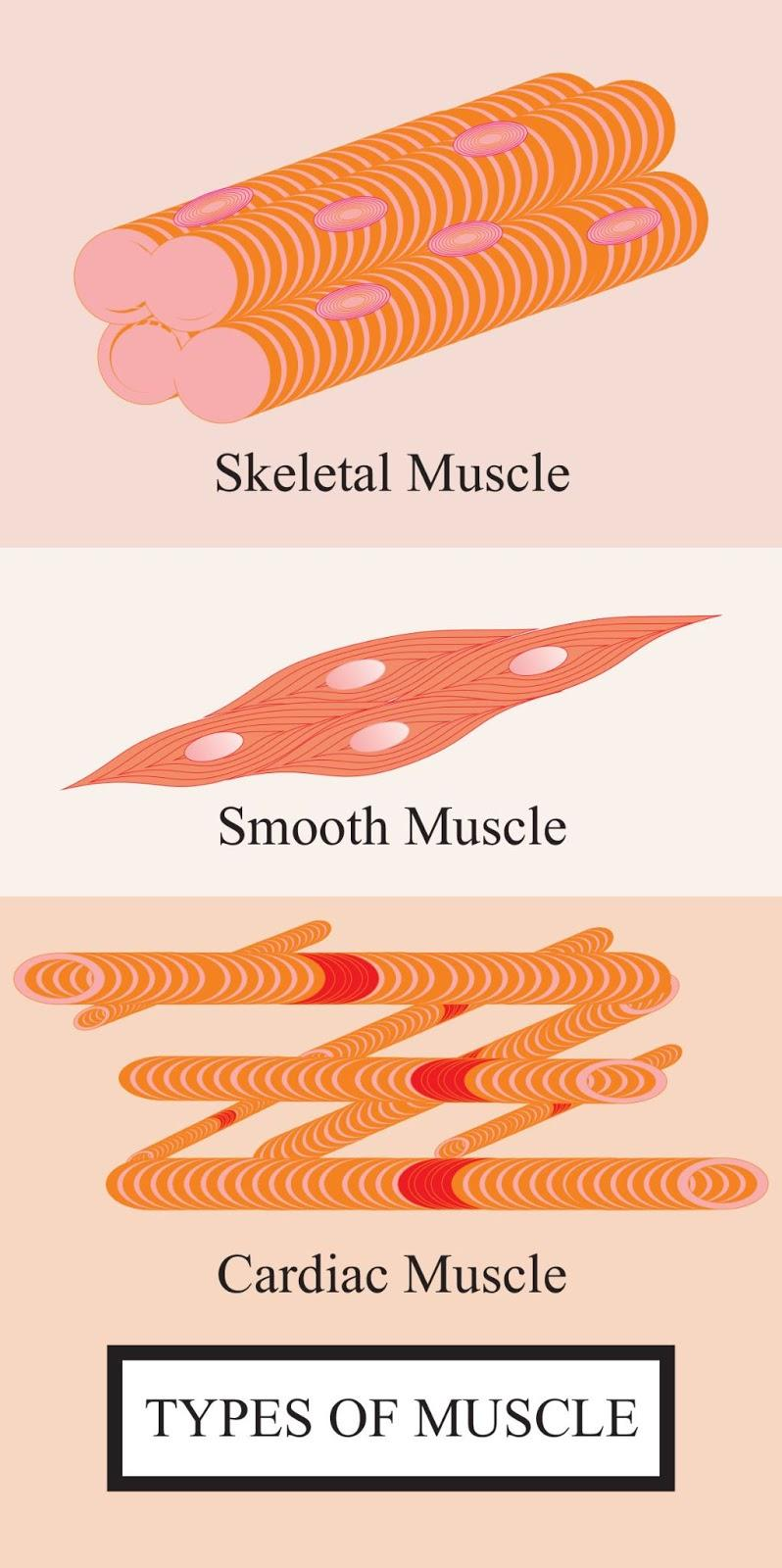
What is the structure of the muscular system?
Answer
418.5k+ views
Hint: Muscles are an important structure found in the human body system that helps in providing movement and give support to the bone. The movement occurs in muscles through contraction and relaxation. They are of various types based on their structure and function.
Complete answer:
The muscular system is made up of three types of muscles that include the striated muscle, smooth muscles, and the cardiac muscles. Each muscle has distinct structures and performs different functions.
Let us know more about each kind of muscle and its importance:
Striated muscles (skeletal muscles) are the high group of organized tissue that helps in the conversion of chemical energy to physical energy. Its primary function is to generate force and contract the muscles in order to support respiration locomotion and posture i.e skeletal muscle and also helps in the pumping of the blood to all the parts of the body i.e cardiac muscles. They are called the involuntary muscles as they are under the control of humans as they move only when the brain sends signals to the body in the form of nerve impulses.
Smooth muscles are the opposite of the striated muscles where the light and dark band coloration is absent. They are made up of muscle fibers called actin and myosin and are located in the vessels, internal cavities, or lumens of the visceral organs. They are under the control of the somatic nervous system and thus are called the involuntary muscles.
The muscles that are found in the heart are the cardiac muscles which are of three types. It comprises vertebrate muscles, skeletal muscles, and smooth muscles which are involuntary, striated muscles that constitute the walls of the heart. The outer layer of the heart wall which is known as the epicardium and the inner layer which is known as the endocardium constitutes a middle layer which is known as the myocardium.

Note:
Mainly living organisms show three types of the movement known as amoeboid, ciliary, and muscular. The activity of various systems includes the skeletal system, muscles system, and nervous system in the case of the animals must be coordinated so that the animals may undergo locomotion. Muscle fibers are made of Microfibrils which in turn are composed of Sarcomeres, which is the reason for the basic functioning of muscle i.e muscle contraction.
Complete answer:
The muscular system is made up of three types of muscles that include the striated muscle, smooth muscles, and the cardiac muscles. Each muscle has distinct structures and performs different functions.
Let us know more about each kind of muscle and its importance:
Striated muscles (skeletal muscles) are the high group of organized tissue that helps in the conversion of chemical energy to physical energy. Its primary function is to generate force and contract the muscles in order to support respiration locomotion and posture i.e skeletal muscle and also helps in the pumping of the blood to all the parts of the body i.e cardiac muscles. They are called the involuntary muscles as they are under the control of humans as they move only when the brain sends signals to the body in the form of nerve impulses.
Smooth muscles are the opposite of the striated muscles where the light and dark band coloration is absent. They are made up of muscle fibers called actin and myosin and are located in the vessels, internal cavities, or lumens of the visceral organs. They are under the control of the somatic nervous system and thus are called the involuntary muscles.
The muscles that are found in the heart are the cardiac muscles which are of three types. It comprises vertebrate muscles, skeletal muscles, and smooth muscles which are involuntary, striated muscles that constitute the walls of the heart. The outer layer of the heart wall which is known as the epicardium and the inner layer which is known as the endocardium constitutes a middle layer which is known as the myocardium.

Note:
Mainly living organisms show three types of the movement known as amoeboid, ciliary, and muscular. The activity of various systems includes the skeletal system, muscles system, and nervous system in the case of the animals must be coordinated so that the animals may undergo locomotion. Muscle fibers are made of Microfibrils which in turn are composed of Sarcomeres, which is the reason for the basic functioning of muscle i.e muscle contraction.
Recently Updated Pages
Master Class 11 Accountancy: Engaging Questions & Answers for Success

Glucose when reduced with HI and red Phosphorus gives class 11 chemistry CBSE

The highest possible oxidation states of Uranium and class 11 chemistry CBSE

Find the value of x if the mode of the following data class 11 maths CBSE

Which of the following can be used in the Friedel Crafts class 11 chemistry CBSE

A sphere of mass 40 kg is attracted by a second sphere class 11 physics CBSE

Trending doubts
10 examples of friction in our daily life

One Metric ton is equal to kg A 10000 B 1000 C 100 class 11 physics CBSE

Difference Between Prokaryotic Cells and Eukaryotic Cells

State and prove Bernoullis theorem class 11 physics CBSE

What organs are located on the left side of your body class 11 biology CBSE

The combining capacity of an element is known as i class 11 chemistry CBSE




